 |
King of Chemicals Manufacturers |
Specifications, Properties, Uses, SDS of Mannitol USP IP EP BP Ph Eur JP Reagent FCC Food Grade Manufacturer Supplier Exporter Wholesale & Small Packs, CAS Number 69-65-8. |
|
| King of Chemicals has several associated companies having accreditations like cGMP, GLP - FDA Approved Good Manufacturing Practice and Good Laboratory Practice of WHO standard, ISO-9001, ISO-14001, ISO/IEC 17025, ISO ISO-45000, HACCP, FSSC 220000, FSSAI, "REACH" Registered, Kosher & Halal Certified. e-CTD and DMF support can be made available if needed. We offer USP NF BP Ph Eur EP IP JP Analytical Reagent FCC Food Grade Chemicals & Nutraceuticals. | |
        |
|
Muby Chem Pvt. Ltd. is a several decades old group of companies, engaged in manufacturing, supplying, distributing, wholesale supplies of Mannitol USP IP EP BP Ph Eur JP Reagent FCC Food Grade for actual users, including retail or small pack supplies for research and development work.
We supply fine and speciality chemicals, pharmaceutical excipients, mineral fortifiers in chemically pure, analytical reagent grade, IP BP USP Ph Eur EP JP and other pharmaceutical grade monograph including FCC Food grade chemicals and Nutraceuticals at best prices. We and/or our associated units have all the facilities to supply as per cGMP standard observing good manufacturing practice and good laboratory practice. We can assure low microbial count and also offer a test certificate for the same. We maintain warehouses across USA, India, and UAE. Our group exports to USA, Canada, Mexico, Argentina, Brazil, Chile, Korea, Malaysia, Thailand, Indonesia, Europe, and several other parts of the world. We supply in wholesale container loads to small pack of few grams. Solid products may be specified for it size and shape as desired by the buyer.


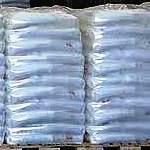
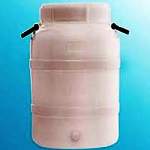
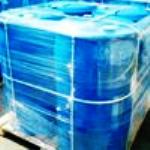
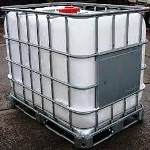
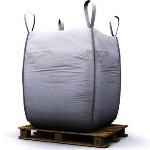
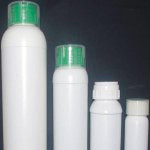
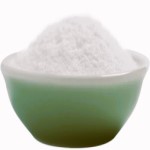
Mannitol CAS Number 69-65-8
For Properties Specifications Uses of Mannitol Click Properties, Specifications, Uses, Price, Process of Mannitol Manufacturer.
For For SDS MSDS Sheet of Mannitol Click SDS Safety Data Sheet MSDS Sheet of bbbbb Manufacturer.
The Properties, Specifications, Monograph and Uses of Mannitol:
Mannitol BP Ph Eur Grade:
C6H14O6 --- 182.2 CAS 69-65-8
Action and use: Diuretic.
DEFINITION
D-Mannitol.
Content: 97.0 per cent to 102.0 per cent (dried substance).
CHARACTERS
Appearance: White or almost white crystals or powder.
Solubility: Freely soluble in water, practically insoluble in ethanol (96 per cent).
It shows polymorphism.
IDENTIFICATION
First identification: C
Second identification: A, B, D
A. Specific optical rotation: + 23 to + 25 (dried substance).
Dissolve 2.00 g of the substance to be examined and 2.6 g of disodium tetraborate in about 20 mL of water at 30C; shake continuously for 15-30 min without further heating. Dilute the resulting clear solution to 25.0 mL with water.
B. Melting point.
C Infrared absorption spectrophotometry.
D. Thin-layer chromatography.
Appearance of solution: The solution is clear and colourless.
Dissolve 5.0 g in water and dilute to 50 mL with the same solvent.
Conductivity: Maximum 20 µS⋅cm-1.
Dissolve 20.0 g in carbon dioxide-free water prepared from distilled water by heating at 40-50C and dilute to 100.0 mL with the same solvent. After cooling, measure the conductivity of the solution while gently stirring with a magnetic stirrer.
Melting point: 165C to 170C.
Reducing sugars: Maximum 0.1 per cent (calculated as glucose equivalent).
Related substances: To pass the test by Liquid chromatography.
Nickel: Maximum 1 ppm.
Loss on drying: Maximum 0.5 per cent, determined on 1.000 g by drying in an oven at 105C for 4 h.
Microbial contamination: To pass the test.
Bacterial endotoxins: To pass the test.
Mannitol USP
C6H14O6 182.17
D-Mannitol.
D-Mannitol CAS 69-65-8
Mannitol contains not less than 96.0 percent and not more than 101.5 percent of C6H14O6, calculated on the dried basis. The amounts of total sugars, other polyhydric alcohols, and any hexitol anhydrides, if detected, are not included in the requirements nor the calculated amount under Other Impurities.
Identification: Infrared Absorption 197K.
Melting range: between 164 and 169.
Specific rotation: between +137 and +145.
Acidity: Dissolve 5.0 g in 50 mL of carbon dioxide-free water, add 3 drops of phenolphthalein, and titrate with 0.020 N sodium hydroxide to a distinct pink endpoint: not more than 0.30 mL of 0.020 N sodium hydroxide is required for neutralization.
Loss on drying: Dry it at 105 for 4 hours: it loses not more than 0.3% of its weight.
Chloride: A 2.0-g portion shows no more chloride than corresponds to 0.20 mL of 0.020 N hydrochloric acid (0.007%).
Sulfate: A 2.0-g portion shows no more sulfate than corresponds to 0.20 mL of 0.020 N sulfuric acid (0.01%).
Arsenic: 1 ppm.
Reducing sugars: To 5 mL of alkaline cupric citrate TS add 1 mL of a saturated solution of Mannitol (about 200 mg). Heat for 5 minutes in a boiling water bath: not more than a very slight precipitate is formed. The amount determined in this test is not included in the calculated amount under Other Impurities.
Mannitol is also available as per IP and EP JP grade monographs.
Mannitol FCC Food Grade
D-Mannitol; Mannite; 1,2,3,4,5,6-Hexanehexol
C6H14O6 Formula weight 182.17
INS: 421 CAS 69-65-8
DESCRIPTION
Mannitol occurs as a white, crystalline powder or as free flowing granules consisting of D-mannitol and a small quantity of sorbitol. It is soluble in water and in pyridine, very slightly soluble in alcohol, and practically insoluble in chloroform and ether.
Function: Nutritive sweetener; texturizing agent.
REQUIREMENTS
Identification:
A. Dissolve 1 g of sample in 75 mL of water. Transfer 3 mL of this solution into a 15-cm test tube, add 3 mL of a freshly prepared 1:10 catechol solution, and mix. Add 6 mL of sulfuric acid, mix again, then gently heat the tube in a flame for about 30 s. A deep pink or wine red color appears.
B. The retention time of the major peak in the chromatogram of the Assay Preparation corresponds to that in the chromatogram of the Standard Preparation as obtained from the Assay.
Assay: Not less than 96.0% and not more than 101.5% of C6H14O6, calculated on the dried basis.
Lead: Not more than 1 mg/kg.
Loss on Drying: Not more than 0.3%.
Nickel: Not more than 1 mg/kg.
pH of a 10% (w/w) Solution: Between 4.0 and 7.5.
Reducing Sugars: Not more than 0.3%.
Residue on Ignition: Not more than 0.1%.
Mannitol Analytical Reagent Grade
HOCH2(CHOH)4CH2OH
Formula weight 182.17
CAS Number 69-65-8
| Specific rotation [α]25°/D | +23.3° to +24.3° |
| Reducing sugars | Passes test |
MAXIMUM ALLOWABLE
| Insoluble matter | 0.01% |
| Loss on drying at 105C | 0.05% |
| Residue after ignition | 0.01% |
| Titrable acid | 0.0008 meq/g |
| Heavy metals (as Pb) | 5 ppm |
The MSDS-SDS Hazard Statement of Mannitol:
Mannitol SDS, Safety Data Sheet
MSDS Sheet, Material Safety Data Sheet 01-April-25
Section 1: Chemical Product and Company Identification
Product Name & Other Names: Mannitol or Mannite
CAS#: 69–65–8
EINECS EC Number: 200-711-8
Relevant uses and uses advised against (if any): Industrial use only.
Section 2: Hazards Identification
GHS, Globally Harmonized System Classification in accordance with 29 CFR 1910
Classification according to Regulation (EC) No 1272/2008
Not a hazardous substance or mixture according to Regulation (EC) No. 1272/2008.
This substance is not classified as dangerous according to Directive 67/548/EEC.
Labeling according to GHS & Regulation (EC) No 1272/2008
GHS Label Elements NONE |
Signal Word: None
Precautionary statements:
P261: Avoid breathing dust/fume/gas/mist/vapors/spray.
P262: Do not get in eyes, on skin, or on clothing.
P281: Use personal protective equipment as required.
P302+P352: IF ON SKIN: Wash with plenty of soap and water.
P304+P340: IF INHALED: Remove victim to fresh air and keep at rest in a position comfortable for breathing.
P305+P351+P338: IF IN EYES: Rinse cautiously with water for several minutes. Remove contact lenses, if present and easy to do. Continue rinsing.
P337+313: If eye irritation persists get medical advice/attention.
Section 3: Composition and Information on Ingredients
Product Name & Other Names: Mannitol or Mannite
CAS#: 69–65–8
EINECS EC Number: 200-711-8
Section 4: First Aid Measures
Eye Contact: Check for and remove any contact lenses. In case of contact, immediately flush eyes with plenty of water for at least 15 minutes. Get medical attention if irritation occurs.
Skin Contact: Wash with soap and water. Cover the irritated skin with an emollient. Get medical attention if irritation develops.
Inhalation: If inhaled, remove to fresh air. If not breathing, give artificial respiration. If breathing is difficult, give oxygen. Get medical attention.
Ingestion: Do NOT induce vomiting unless directed to do so by medical personnel. Never give anything by mouth to an unconscious person. If large quantities of this material are swallowed, call a physician immediately. Loosen tight clothing such as a collar, tie, belt or waistband.
Section 5: Fire and Explosion Data
Flammability of the Product: May be combustible at high temperature.
Fire Fighting Media and Instructions: Use water spray, alcohol-resistant foam, dry chemical or carbon dioxide.
SMALL FIRE: Use DRY chemical powder.
LARGE FIRE: Use water spray, fog or foam. Do not use water jet.
Special Information: In the event of a fire, wear full protective clothing and NIOSH-approved self-contained breathing apparatus with full face piece operated in the pressure demand or other positive pressure mode. At high temperatures under fire conditions, it may produce toxic or irritating fumes.
Section 6: Accidental Release Measures
Personal precautions, protective equipment and emergency procedures: Avoid breathing dust/fumes/gas/mist/vapors/spray. Ensure adequate ventilation. Use individual protective equipment (waterproof boots, suitable protective clothing, safety glasses, etc.).
Environmental precautions: Do not let the product enter drains, soil or water sources.
Methods and materials used for containment Cleanup procedures and Storage: Use a shovel to put the material into a convenient waste disposal container.
Section 7: Handling and Storage
Precautions for safe handling: Apply according to good manufacturing and industrial hygiene practices. Ensure proper ventilation. Wash thoroughly after handling. Do not drink, eat or smoke while handling. Avoid contact with skin, eyes and clothing. Minimize dust generation. Avoid breathing dust/fumes/gas/mist/vapors/spray. Keep container tightly closed. Avoid ingestion and inhalation. Use individual protective equipment (waterproof boots, suitable protective clothing, safety glasses, etc.).
Conditions for safe storage, including any incompatibilities: Store in cool, dry and ventilated area away from heat sources and protected from sunlight in tightly closed original container. Keep air contact to a minimum. Do not leave the material container open. Store protected from heat, sparks and ignition sources and incompatible materials. Avoid inhalation of dust/mist/vapor. Do not store with incompatible materials like oxidizing agents. Do not store above 23C (73.4°\F).
Section 8: Exposure Controls/Personal Protection
Engineering Controls: Use process enclosures, local exhaust ventilation, or other engineering controls to keep airborne levels low.
Exposure Limits: This product does not contain any hazardous materials with occupational exposure limits established by the region-specific regulatory bodies.
Ventilation System: A system of local and/or general exhaust is recommended to keep employee exposures low.
Personal Respirators (NIOSH Approved): For conditions of use where exposure to dust or mist is apparent and engineering controls are not feasible, a particulate respirator may be worn.
Skin Protection: Wear protective gloves and clean body-covering clothing.
Eye Protection: Use chemical safety goggles and/or full face shield where dusting or splashing of solutions is possible. Maintain eye wash fountain and quick-drench facilities in work area.
Other Control Measures: Maintain good housekeeping in work area. Handle in accordance with good industrial hygiene and safety practice.
Section 9: Physical and Chemical Properties
Physical state and appearance: White powdered solid.
Odor: Odorless.
Odor threshold: Not applicable.
pH (1% soln/water): 5-6.5.
Relative density: 1.5
Melting Point: 166C to 170C.
Initial boiling point and boiling range: No information found.
Flash point: No information found.
Auto-ignition temperature: No information found.
Decomposition temperature: No information found.
Upper/lower flammability or explosive limits: No information found.
Vapor pressure: No information found.
Vapor density: No information found.
Evaporation rate: No information found.
Flammability (solid, gas): No information found.
Partition coefficient: n-octanol/water: No information found.
Solubility: Soluble in cold water, hot water.
Viscosity: No information found.
Section 10: Stability and Reactivity Data
Stability: It is stable.
Conditions of Instability: Excess heat, incompatible materials.
Incompatibility with various substances: Reactive with oxidizing agents.
Polymerization: Will not occur.
Section 11: Toxicological Information
Toxicity to Animals:
LD50 Oral - Rat - 13500 mg/kg
LD50 Oral - Mouse - 22000 mg/kg
Carcinogenicity: No component of this product present at levels greater than or equal to 0.1% is identified as probable, possible or confirmed human carcinogen by IARC.
Mutagenic Effects: No information found.
Developmental Toxicity: No information found.
Reproductive Effects: No information found.
Section 12: Ecological Information
Ecotoxicity: No data found.
Results of PBT and vPvB assessment: This substance/mixture contains no components considered to be either persistent, bioaccumulative and toxic (PBT), or very persistent and very bioaccumulative (vPvB) at levels of 0.1% or higher.
Section 13: Disposal Considerations
Waste Disposal: Waste must be disposed of in accordance with environmental control regulations.
Section 14: Transport Information
Land Transport DOT USA, TDG Canada & ADR/RID Europe: Not controlled.
Sea Transport IMDG/IMO: Not controlled.
Air Transport IATA/ICAO: Not controlled.
Section 15: Other Regulatory Information
USA:
SARA 311/312 Hazards: No SARA hazards.
California Prop. 65 Components: Not listed.
DISCLAIMER: The information and recommendations set forth herein are presented in good faith and believed correct as of the date hereof. It is compiled from various sources, and it is not necessarily all inclusive nor fully adequate in every circumstance. In addition, these suggestions should not be confused with nor followed in violation of applicable laws, regulations, rules, or insurance requirements applicable. This SDS MSDS sheet is intended only as a guide to the appropriate precautionary handling of the material by a professionally trained person using this product. Individuals receiving the information must exercise their independent judgment in determining its appropriateness for a particular purpose. This shall not constitute a guarantee for any specific product features and shall not establish a legally valid contractual relationship. In no case shall our company be liable to loss or damages by the product user.

Mannitol Manufacturers, Suppliers, Exporters, Wholesalers:
King of Chemicals manufacturers

Plot No. 2900/46&47 + 2900/163to167, GIDC, Ankleshwar, Dist. Bharuch, India
India, USA, UAE
TEL: (Office) 91-22-23774610, 91-22-23723564
e-mail: info@kingofchemicals.com
Copyright and Usual Disclaimer is Applicable --- July 9, 2025
If I give you “My Word” Nobody can undo it.
If I sign an “Agreement” my Lawyer will undo it
Our products are for industrial and laboratory use only. The user must test the material before use. We are not dispensing chemists or druggist and do not offer over the counter type (OTC) products for medical use by individuals.
We and our associates manufacture pure chemicals surpassing Monograph Specifications of Analytical Reagent Standards, British & European Pharmacopoeia BP Ph Eur EP Standard, US Pharmacopoeia USP NF Standard, Indian Pharmacopoeia IP Standard, Japan Pharmacopoeia JP Standard, FCC Food Grade Standard. |
|